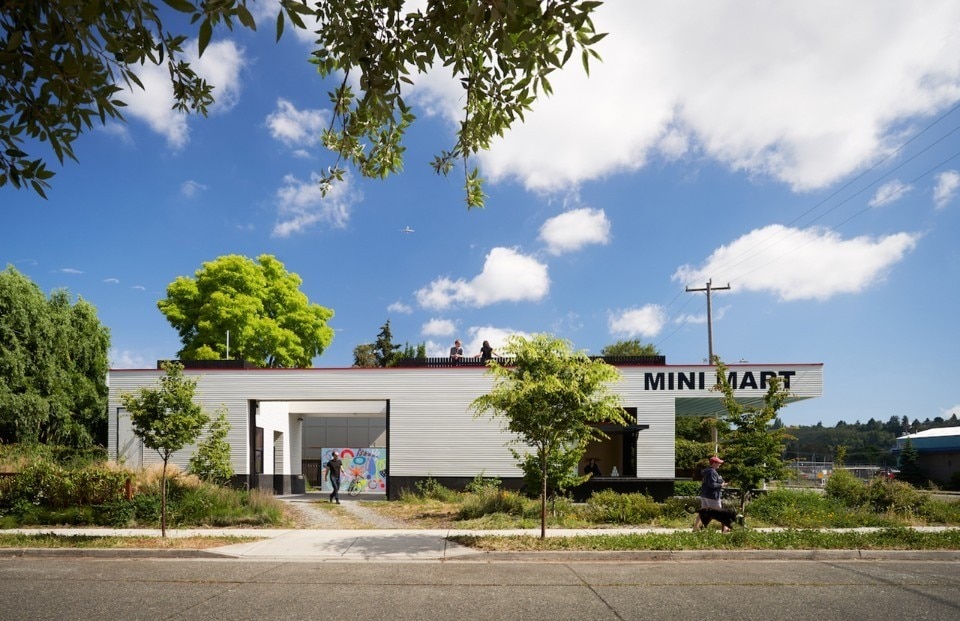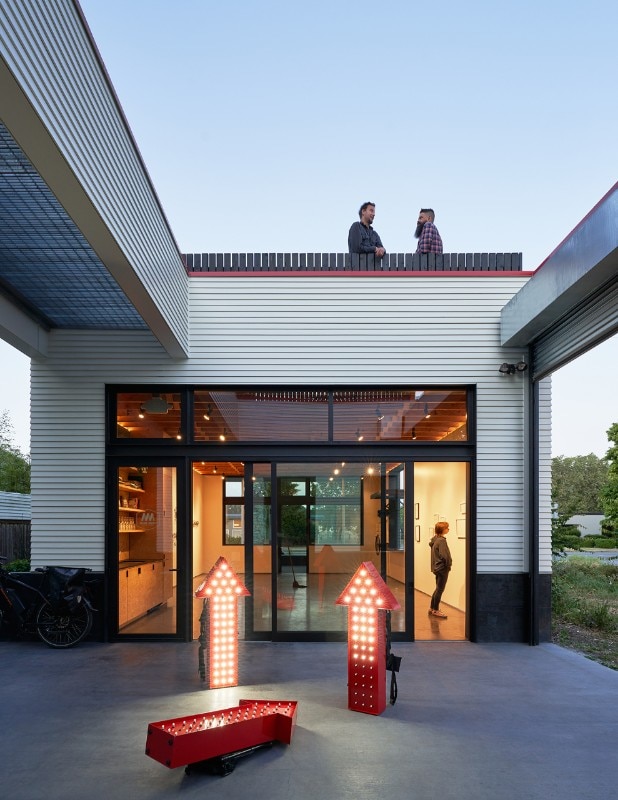In Seattle, northern Pacific coast of the United States, a former gas station from the 1930s has been regenerated to give life to a community center where artistic expression and civic value merge. Here, Go'C studio has aimed to explore the potential of such combination by extending the design to encompass the building – entirely reconfigured –and a surrounding park. As described by the founding art collective of the cultural center, Go'C studio experiment shows a wider project possibility, based on the same principles of care and transformation, considering the over 700 ex-gas stations present in the area.
The Mini Mart City Park project can then be read according to two interpretations, the first concerning its architectural and functional characteristics, and the second focusing on its environmental sensitivities.
The architecture references the aesthetics of old gas stations, using painted clapboard cladding with a large overhanging roof. Inside, the space is compact and flexible, guaranteeing the widest variety of uses, and wood is once again a signature presence, through a sequence of exposed wooden beams covering the part of interior space dedicated to an art gallery, and filtering the external light coming from a skylight above.

In terms of layout, the volume is shared by a gallery and a warehouse, divided by a patio that opens onto the outside, creating meeting places in the intermediate spaces between the park and the building. Here, outdoor movie night gatherings and art exhibitions are hosted, configuring the open courtyard as a multifunctional area in connection with the local community.
The civic and cultural character of the architecture thus joins the environmental one. This aims to the regeneration of polluted soils, and the construction of an ecological continuity between the architecture and the park. Thus, this sensibility is declined by inserting ventilation systems underneath the architecture, reclaiming the ground, while the large roof is revisited as a roof garden and additional socializing space.



















